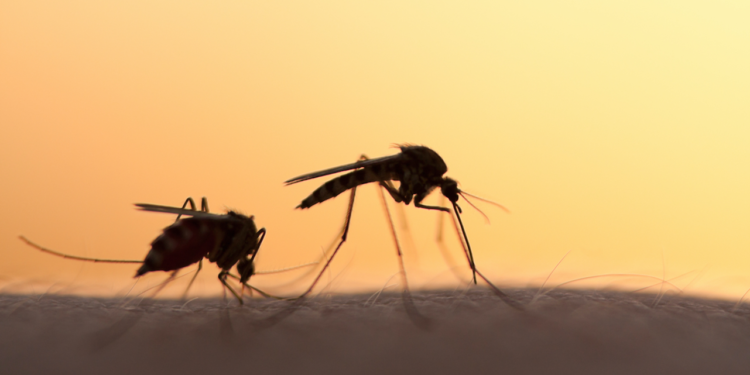An expert has opened up on how mosquito-borne diseases are on the rise worldwide, especially in Europe, as a result of climate change.
These diseases, including malaria and dengue fever, have seen a significant surge in cases over the last 80 years due to the warmer and more humid environments created by global warming.
Prof Rachel Lowe who leads the global health resilience group at the Barcelona Supercomputing Center in Spain, has warned that mosquito-borne disease outbreaks are set to spread across currently unaffected parts of northern Europe, Asia, North America, and Australia over the next few decades.
She is due to give a presentation at the global congress of the European Society of Clinical Microbiology and Infectious Diseases in Barcelona to warn that the world must be prepared for a sharp uptick in these diseases.
- “Global warming due to climate change means that the disease vectors that carry and spread malaria and dengue [fever] can find a home in more regions, with outbreaks occurring in areas where people are likely to be immunologically naive and public health systems unprepared,” Lowe said.
- “The stark reality is that longer hot seasons will enlarge the seasonal window for the spread of mosquito-borne diseases and favor inc
The insect is thriving, with nine out of the 10 most favorable years for disease transmission happening since 2000. Moreover, the World Health Organization has witnessed a staggering eightfold rise in dengue cases over the past two decades, soaring from 500,000 in 2000 to over 5 million in 2019.
Lowe said climate breakdown would turbocharge this spread as droughts followed floods: “Droughts and floods linked to climate change can lead to greater transmission of the virus, with stored water providing additional mosquito breeding sites.
“Lessons from previous outbreaks underscore the importance of assessing future vector-borne disease risks and preparing contingencies for future outbreaks.”
She said that if the current trajectory of high carbon emissions and population growth continued, the number of people living in areas with mosquito-borne diseases would double to 4.7 billion by the end of the century.
- Lowe added: “With climate change seeming so difficult to address, we can expect to see more cases and possibly deaths from diseases such as dengue and malaria across mainland Europe. We must anticipate outbreaks and move to intervene early to prevent diseases from happening in the first place.
- “Efforts need to focus on enhancing surveillance with early warning and response systems similar to those seen in other parts of the world, to more effectively target finite resources to the most at-risk areas to control and prevent disease outbreaks and save lives.”
Climate breakdown is also amplifying the threat of antimicrobial resistance, a separate presentation at the conference will warn.
How Climate Change Is Affecting Mosquito-Borne Disease Spread
- Warmer temperatures can extend the period that mosquitoes are abundant, particularly in places where mosquitoes are not active year-round. This can result in small outbreaks of disease, as witnessed in France and Italy, where outbreaks of dengue were reported last year. Although dengue is non-endemic in Europe, recent mathematical models suggest dengue could be endemic in the United Kingdom by 2050 and in southern Europe within 15 to 20 years.
- Increased rainfall is especially conducive to the proliferation of mosquitoes. In 2019 in Zanzibar, for example, due to an anomalous increase of precipitation, malaria transmission rates were higher in the “short” rainy season compared to the usual increase in cases recorded during the “long” rainy season. Variations in the rainfall pattern have been recorded across the eastern coast of Africa with an important impact on malaria transmissions in Tanzania, Kenya, and Ethiopia, among others.
- In addition to creating favorable breeding conditions for mosquitoes, research suggests that climate change could accelerate the incubation of pathogens in mosquitoes, as well as the insects’ overall development and biting rates, exacerbating the potential for mosquito and disease spread (read more here and here).
- Warmer, wetter conditions also support the expansion of the pathogens—typically protozoa or viruses—that cause infection and illness. Various species of mosquitoes that weren’t previously carriers can become vectors when a new agent is introduced into their habitat.










